It may seem surprising now but for the first generation of Victorians, chemistry was part of the Christmas mainstream – from Christmas concerts interspersed with chemical demonstrations to a Dickens play about a haunted chemist.
The celebration of Christmas underwent a transformation at the start of the Victorian period, as traditions were reinvented for modern tastes, incorporating the prevailing fashion of all things scientific and progressive.
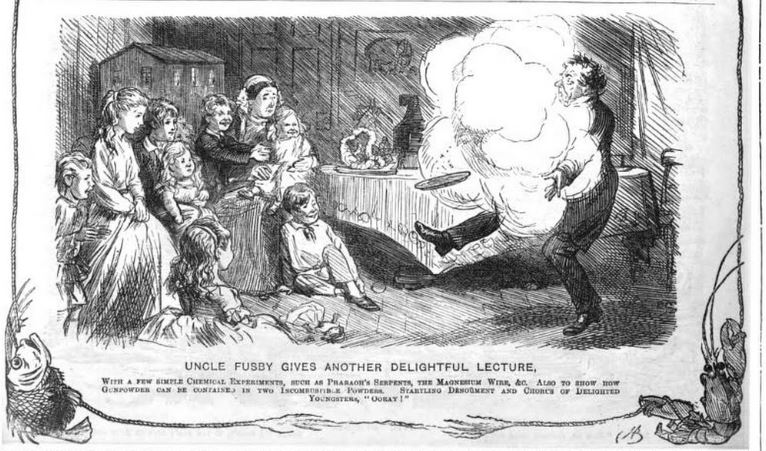
Christmas leisure culture, for an increasing portion of the population, centred around London, with many provincials making use of the new railways to experience the shows and sights of the capital’s festive season.
Chemistry at the panto
Pantomimes in this period became associated with Christmas. Far from the shouty, childish efforts of today, they were clever, satirical shows with cutting-edge stage technology creating sensational spectacles.
Many Victorian pantos took on science themes. One particularly spectacular effort was the Land of Light, or Harlequin Gas and the Four Elements. Opening at the Victoria Theatre (now the Old Vic) on Boxing Day 1848, it made artificial gas light its subject.
The pantomime begins in a coal mine 5000-miles below the surface of the earth where a group of banished fairies complain they are no longer liked in a society of science and modern improvement.
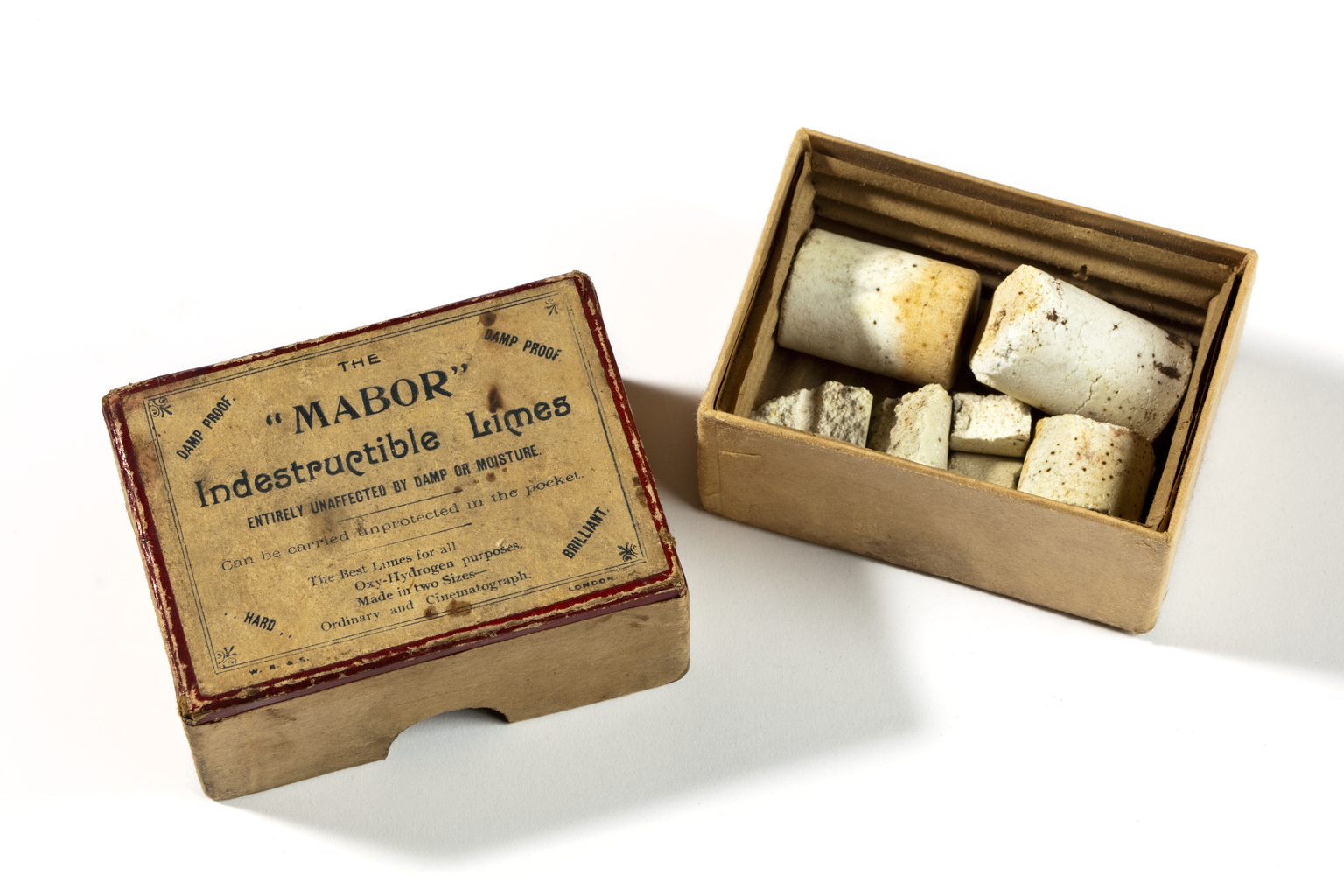
They are joined by the personification of Science, who challenges the fairies to a contest of traditional panto magic.
Science’s first trick is to combust a slab of coal – the stage directions here are brilliant, indicating a ‘player’ emerges from a giant lump of coal with ‘a flame upon his head’. This might be the only instance in the history of the panto where a chemical process is the subject of a scene.
For the finale, Science transports everyone to the ‘Land of Light’, cue a dazzling illumination of camphine, budelight and limelight – all very explosive gases. Theatres in Victorian London regularly burnt down. It is a marvel the Victoria didn’t that night.
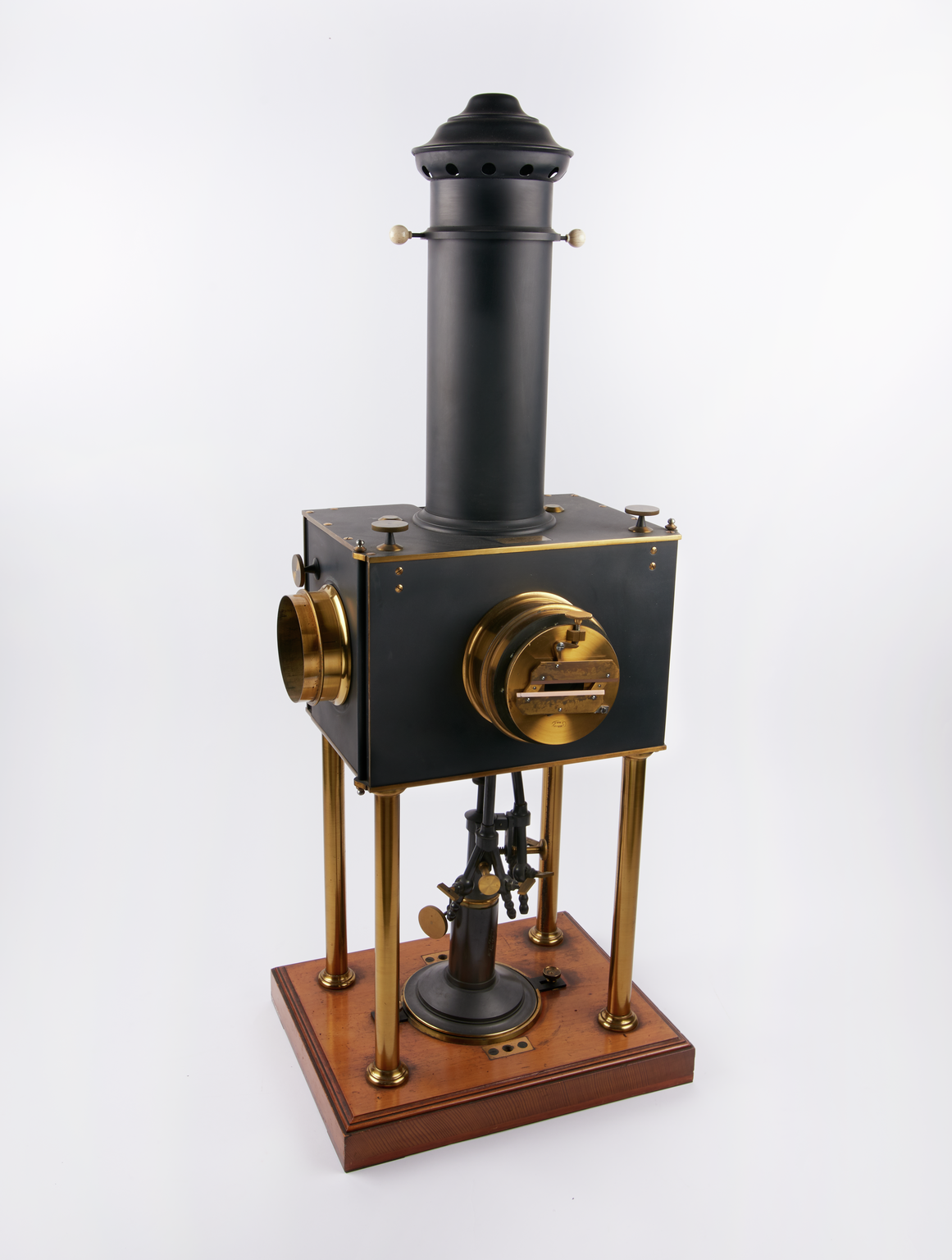
The Land of Light’s playwright, E. L. Blanchard, penned many pantos with science themed. He was prolific, responsible for every Drury Lane pantomime for 35 years.
Blanchard began his career as a travelling popular science lecturer, specialising in oxyhydrogen-microscope display.
These projection microscopes utilised the powerful light from burning a mixture of oxygen and hydrogen gas. They could enlarge a flea to the size of an elephant.
Handel with laughing gas
Catering to a demand for a more wholesome form of ‘rational recreation’ than the rowdy theatres, two London galleries of ‘practical science’ opened in the 1830s.
The Adelaide Gallery and the Polytechnic Institution (now the University of Westminster) were known for spectacular demonstrations, from your standard stinks and explosions to diving bells and giant electrical coils.
They were great rivals during the Christmas season. One year, the Adelaide put on recitals of Handel’s Messiah to oxyhydrogen microscope displays and laughing gas demonstrations.
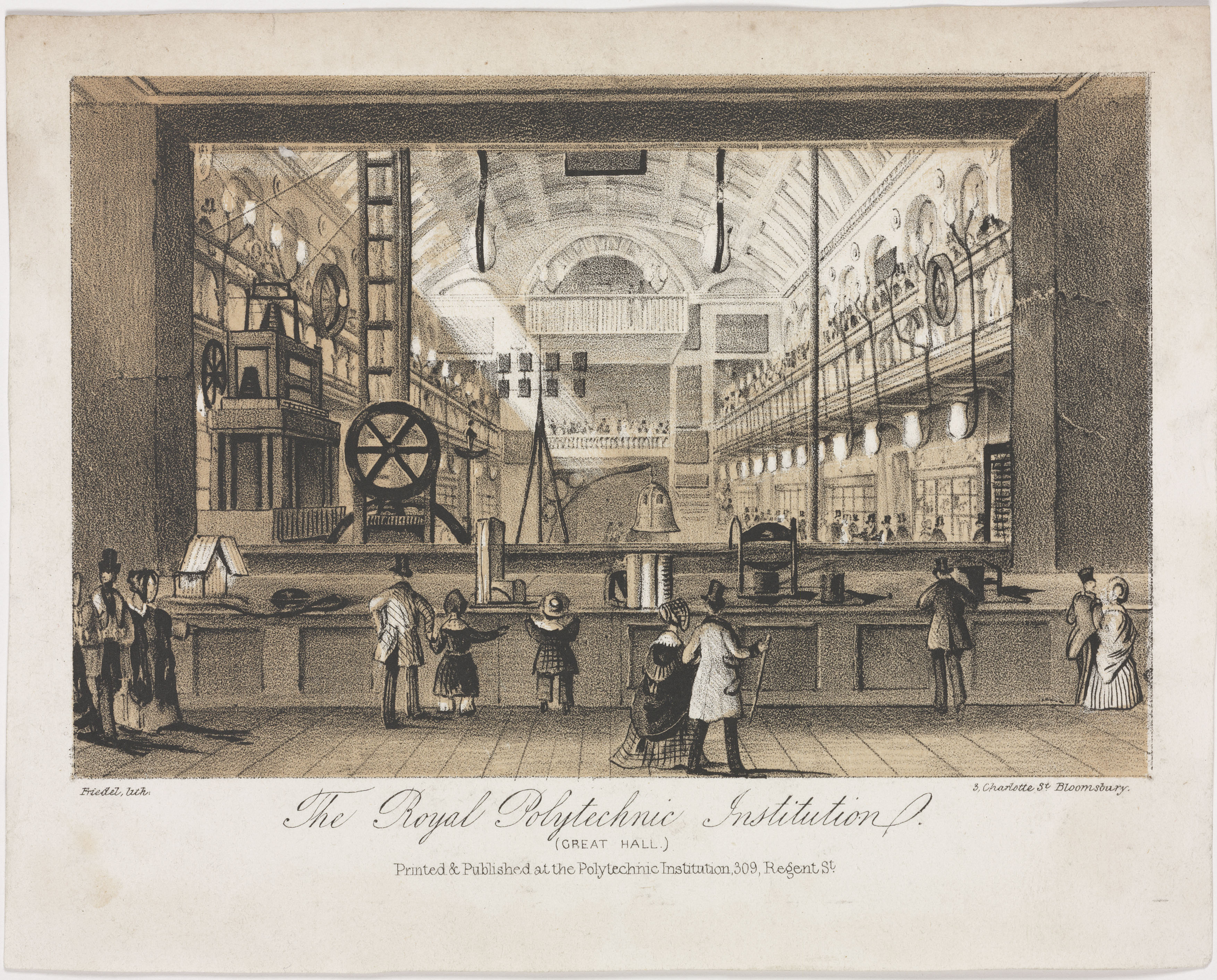
A reviewer for The Times was not impressed:
half-a-dozen of that class of persons who are not inappropriately termed “snobs” inhaled the laughing-gas, and managed […] to make themselves greater fools than nature perhaps designed them to be
The Polytechnic, which boasted its own public laboratory, always outdid the Adelaide. Their professor of chemistry, John Henry Pepper, masterminded the festive programme.
Pepper’s haunted chemist
At Christmas 1862 Pepper surpassed himself. He stumbled upon a new kind of stage trick for Christmas, which still bears his name: Pepper’s Ghost.
By shining a limelight upon an actor concealed in a gallery below the stage, an image of the actor would be projected via angled glass into the audience, appearing as if on stage.
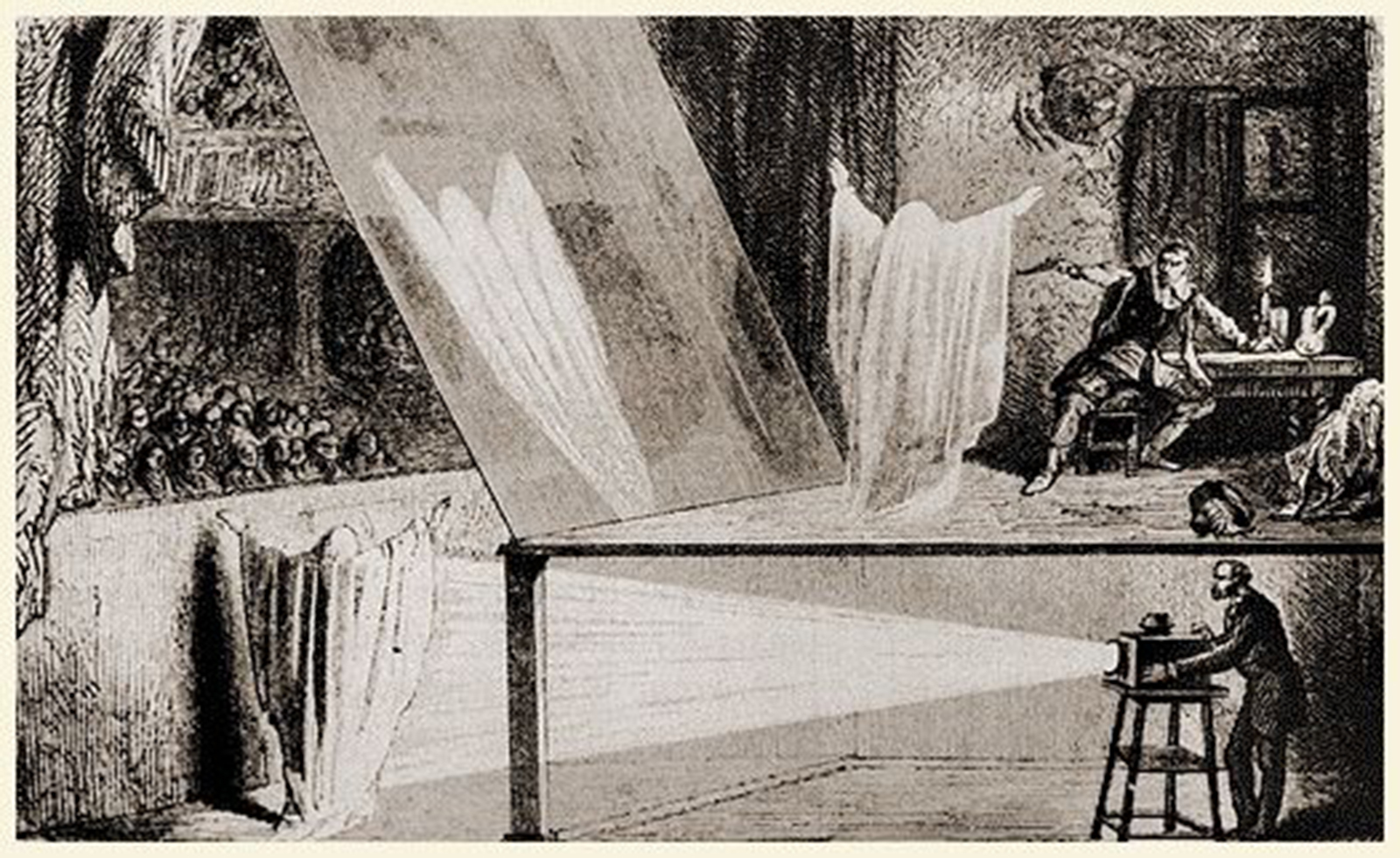
For the first public performance of the Ghost illusion, Pepper staged a Dickens short story, The Haunted Man and the Ghost’s Bargain (1848), about a ‘learned man in chemistry’ haunted by his doppelganger.
Dickens’ protagonist was likely inspired by Michael Faraday, whose hugely-successful Christmas Lecture series, ‘The chemical history of a candle’, caught the attention of Dickens, the writer later publishing a version of the lecture in his own periodical.
Pepper’s Ghost became one of the most popular Christmas entertainments, attracting the likes of Prince Albert and even Faraday himself.
Faraday and his flaming plums
But in terms of high society, Faraday’s own Christmas Lectures were unrivalled. The papers published lists of attendees that read like a Who’s Who of upper-class London. The writer George Eliot deemed them ‘more fashionable than the opera’.
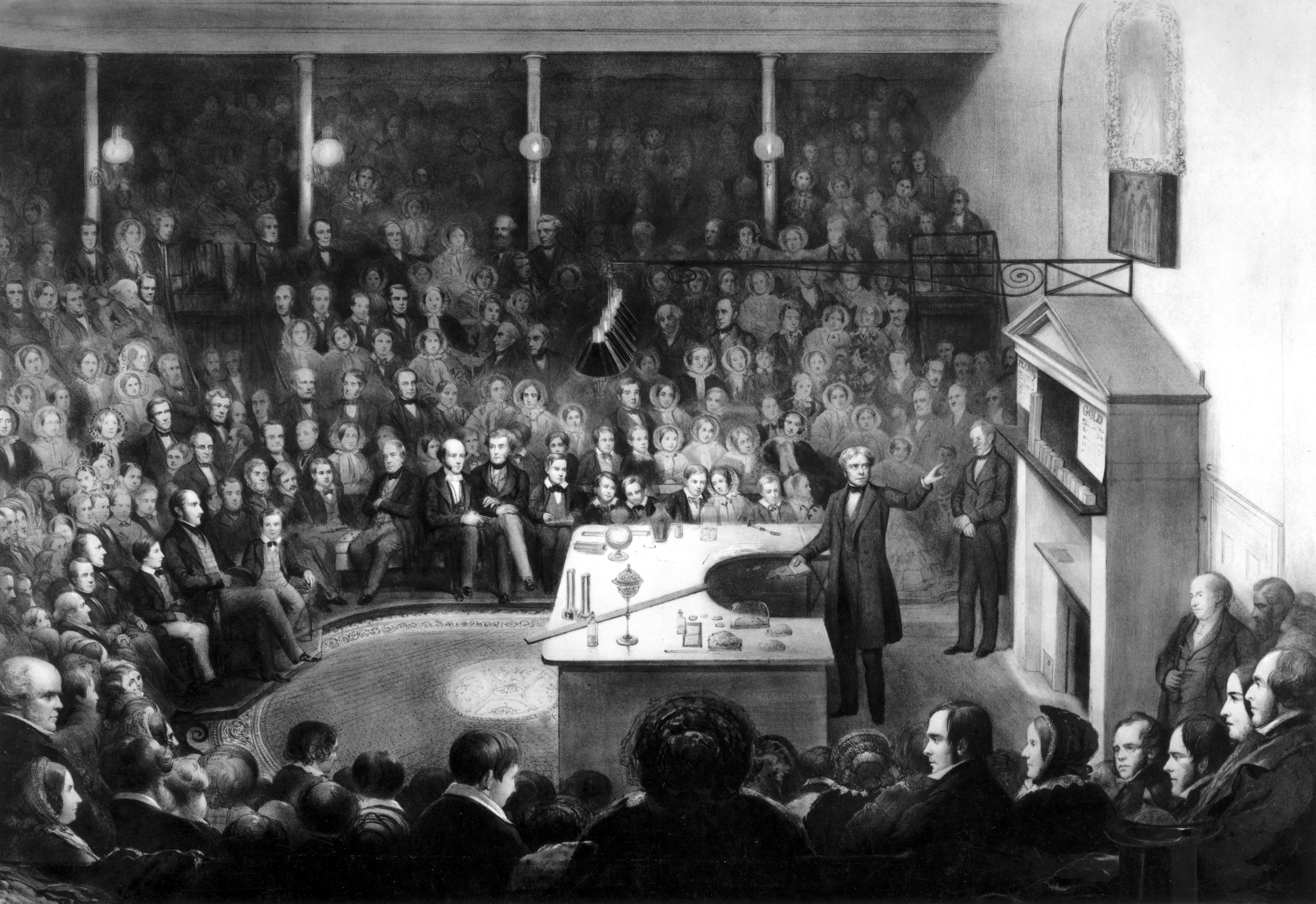
Over the 19 series he gave, Faraday drew on Christmas traditions to illustrate principles of science. In his final ‘Candle’ lecture he played Snap-dragon, a festive parlour game that hasn’t survived.
In the pitch-dark theatre, Faraday covered plums in brandy, set them alight, then tried to pick them up, declaring ‘I do not know a more beautiful illustration of the philosophy of flame’.
The Christmas Lectures are the only surviving relic of this Victorian crossover between science and Christmas.
I probably won’t be trying limelight projections or Handel with laughing gas, but I may give Snap-dragon a go this Christmas…
